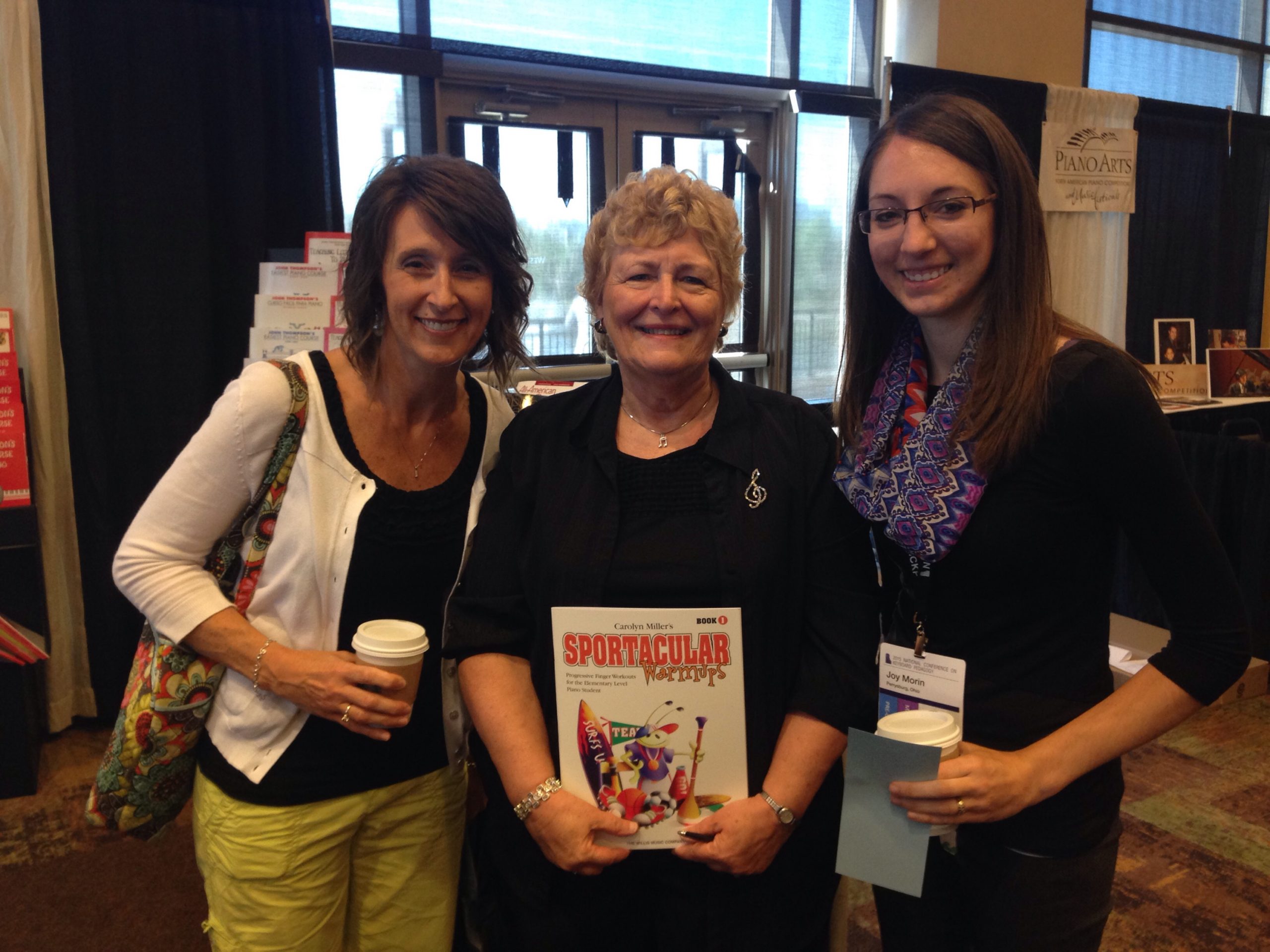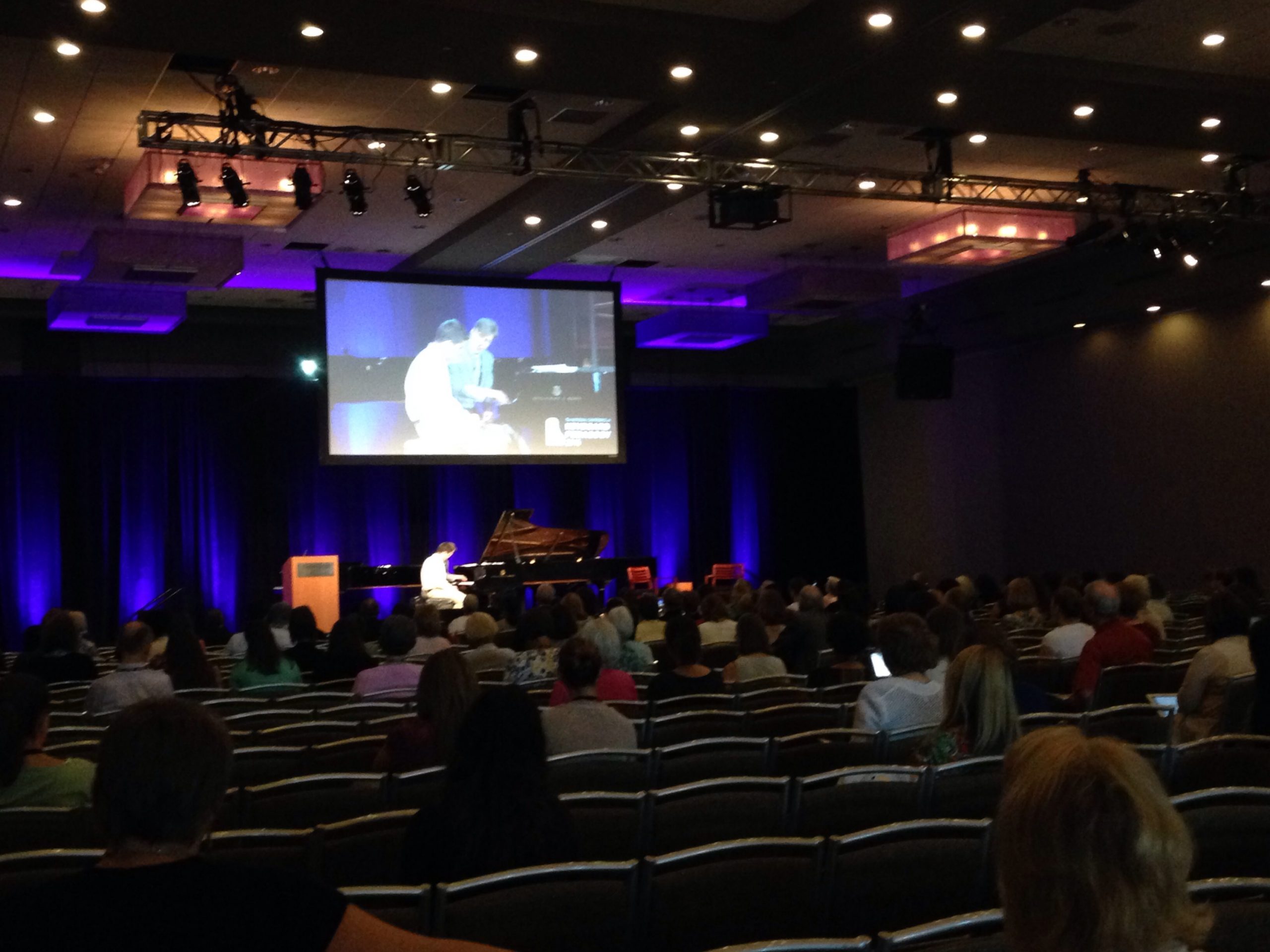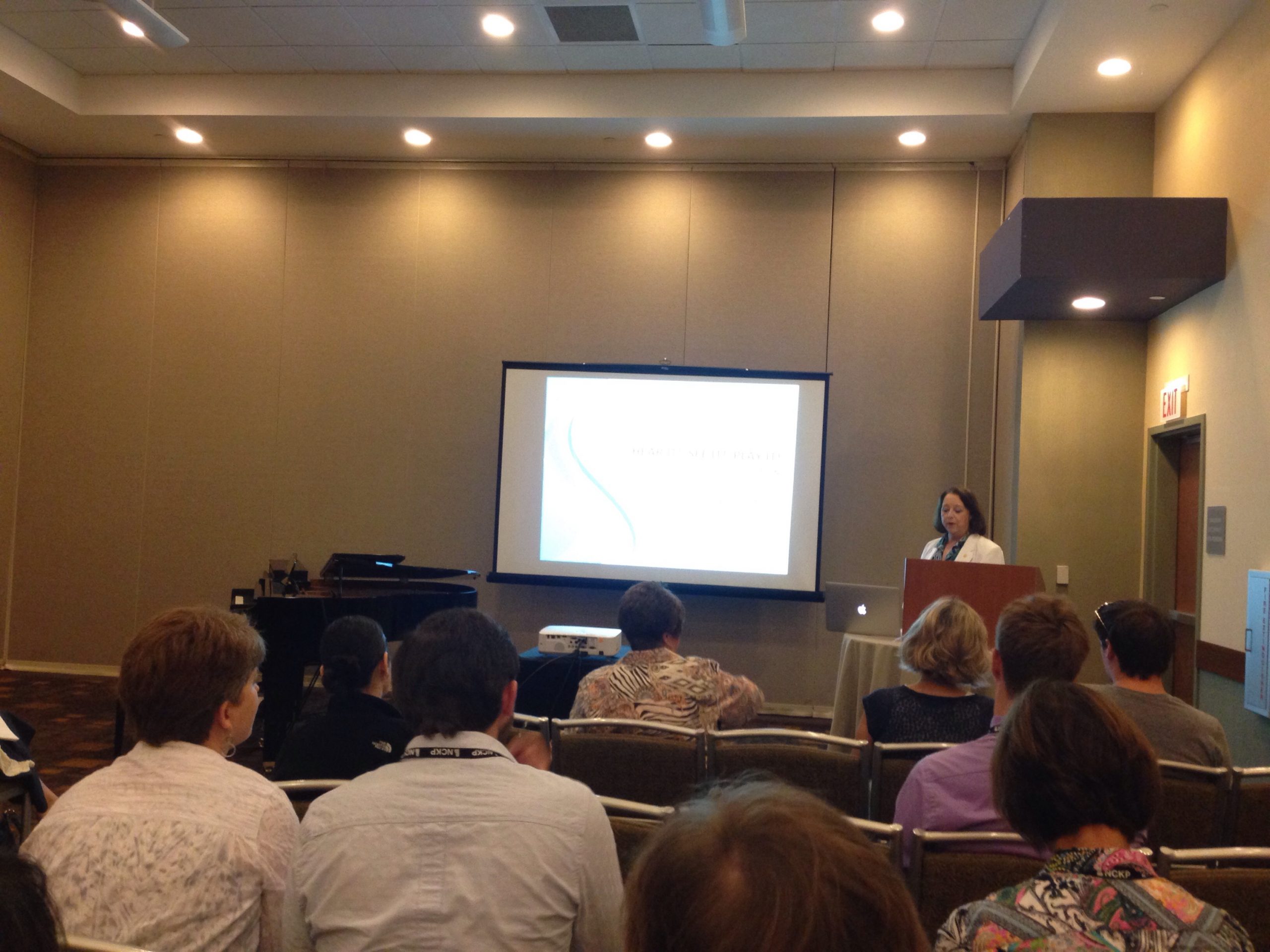In continuation of my summaries of the happenings at the 2015 National Conference on Keyboard Pedagogy, below are my notes from Friday, July 31.
[In case you missed them, here are links to previous three days:]
- NCKP 2015 (1): Wednesday PreConference Seminars
- NCKP 2015 (2): Thursday, July 30
- NCKP 2015 (3): Friday, July 31
8:00 Publisher Showcase: Willis Music

The Willis Music publisher showcase, called Recital Repertoire for Rave Reviews, was led by Carolyn Miller. She played a huge variety of music, including many recent publications, that would be particularly effective performed at recitals.
We also ducked into the Faber Piano Adventures showcase and took a picture with Randall Faber afterwards!
Next we visited the exhibit hall and took a photo with Carolyn Miller.
…and the marvelous Glenda Austin!
We also ran into Lisa Donovan Lukas in the exhibit hall — author of The Young Musician’s Guide to Songwriting.
9:30 Teaching Demonstration: A “Four Arts of Music” Demonstration Lesson by Forrest Kinney
Forrest Kinney (author of the Pattern Play and Chord Play books) worked with a 15-year-old intermediate student for this teaching demonstration. They began by talking about alignment of the body while standing. Then, he asked the student to press a key down using a pencil’s eraser: first, holding the pencil vertically and then holding the pencil horizontally. This demonstration was very effective to discover that playing with flat fingers is far less efficient and comfortable than playing with tall fingers.
Improvisation can be useful for learning technique, learning theory, and also for interpreting literature. Forrest commented that he no longer teaches theory apart from improvising or actually DOING theory at the piano.
The student performed part of a Schubert waltz and Forrest helped him talked about capturing the waltz mood and knowing (improvising with) the six chords of a particular passage can prevent memory slips. They also discussed how slight differences in each motive’s appearance could impact the interpretation of the piece. The art of interpretation is bringing a script to have meaning. For example, if I dully say, “I am excited,” that would be a poor interpretation. How would YOU say, “I am excited,” or, “I am in a hurry”? That is what interpretation is about.
Next, they shifted focus to arranging. Beforehand, the student had prepared the tune Danny Boy by ear and had begun putting chords with the melody in the LH. Forrest gave a suggestion to change the blocked LH accompaniment style to a flowing broken-chord pattern and using a lead sheet to pencil in various chord substitutions as desired.
Forrest was a warm and very entertaining clinician. If you had been there, I think you would agree that this was a highlight of the conference. It was so helpful and fun to see a teaching demonstration with a student that could have been any one of the students in our studios. I hope NCKP continues to offer this type of demonstration!
11:15 Hear it! See it! Play it! Successful Tips for Sightreading and Aural Skills by Cathy Alberto and Mitzi Kolar
Cathy Albergo discussed the results that occur when we use a “sounds before sight” approach instead of a “sight before sound” approach, and how ear training activities can and should be an integrated part of piano study. When used consistently and carefully sequenced, ear training is very successful, fun, and meaningful.
Cathy shared many ideas and video clips for a variety of ear training activities. Rhythm “clapbacks” are a wonderful way to begin ear training development, and they naturally lead to rhythmic dictation. An ear for relative pitch and interval identification can be developed and explored through interval songs, starting with the Middle C Song used in the Celebrate Piano method. “Playbacks” are when students listen to teacher’s pattern and play it back on the piano by ear. “Pitch Detective” is when students are given Middle C as a reference, must sing back a pattern in solfege, and notate it. “Pattern Detective” is where the student listens and identify which notated pattern (A or B) they heard. More advanced activities that Cathy described involved harmonic discrimination and chord progression identification.
Cathy stated that these aural activities do not have to be large chunks of time, but they should be regular, brief, and always related to / based on the repertoire that students are learning. The investment results are worth it. Your students will be able to “hear” the music before they play.
Post-Conference Summary
NCKP 2015 was definitely the best conference I have ever attended to date. I love that the NCKP is so successful in reflecting the mission of the Frances Clark Center: in particular, the part about supporting teachers who are dedicating to teaching students of all levels, ages, ethnicities, and socio-economic backgrounds to become life-long lovers of music. There were many threads of this nature running through the presenters’ sessions throughout the conference, which was so neat to see. The world of piano pedagogy is evolving as always for the better, and NCKP is striving to stay at the forefront of this movement!
The NCKP is small enough to somehow feel like a big family of piano teachers, 😉 but big enough to a massive impact on our field. It is invigorating to connect and re-connect with fellow teachers and learn together over the course of a few focused days. I’ve already mentioned a few individuals and fellow bloggers that I took photos with during the conference, but there were quite a few others that I neglected to mention (including Nancy DeHaven Hall, who was kind enough to help proofread my RCM Technique Charts, blogger Tim Topham all the way from Australia, those of you who introduced yourselves to as followers of my blog, and other friends…) — you know who you are!
For the independent piano teacher, professional development is a great personal sacrifice of time, effort, and money. I believe it is a sacrifice we have a responsibility to make, for the sake of our students, our profession, and our own levels of teaching energy. I hope you will consider setting aside money for NCKP 2017, or for other resources or events closer to home!
I totaled up the value of the conference freebies I took home (from the Exhibit Hall and the Publisher Showcases) and the cost this time totaled over $175! Part of the fun of attending conferences is being exposed to new publications to try out with students — and it does somewhat help defray the costs of attending the conference.

I’ve already been using tips and ideas from NCKP 2015 in my teaching this week. 🙂 Later this week, I’m hope to glean more wisdom from Irina Gorin’s workshop near Indianapolis. I’ve been looking forward to these two events all year!









1 thought on “NCKP 2015 (4): Saturday, August 1”